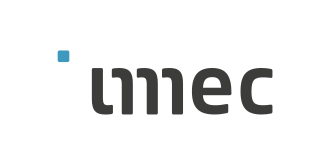
-
StatusOngoing
-
Status date2022-07-15
-
Activity Code7B.070
The project consists of a product phase and a technology phase.
The product phase objective is the new Dialog® release 2.5.1 that offers the following new capabilities:
-
Support of Mx-DMA MRC return link technology with symbol rates up to 100 Mbaud
-
Support of mobility networks with 7k terminals roaming over 250 beams
-
Support of free-running/unslaved BUCs for MRC terminals
-
Hub and terminal access security
The technology phase has two research and prototype tracks. One track investigates the use of AI/ML for optimizing the ACM algorithm. The other track focuses on improving the capacity and related symbol rates of satellite networks using virtual carriers in a physical wideband carrier.
One of the major challenges of the project is the improved scalability:
-
As the Dialog product is very complex, the initial assessment of the scalability bottlenecks could be wrong leading to wrong effort assumptions
-
The scalability requirement is simulated and tested in a lab environment and behaviour could be different in a real environment
Another technology challenge is the MCD7500 channelizer upgrade which could run into problems when increasing the symbol rate for MRC, causing FPGA resource issues.
Dialog® is a multi-market, multi-service GEO VSAT platform that allows operators and service providers to build and adapt their infrastructure and satellite networking according to business or missions at hand.
The main benefit from MRC100 Product development for the Dialog® product is the new release 2.5.1: the MRC return capacity is quadrupled enabling the service operators to build a positive business case exploiting the cost efficiency of the MRC technology over a very large range of return bandwidth sizes. Thanks to the improved scalability and operational functionality for global mobility networks, customers can further expand their networks and business services.
MRC100 Technology phase development is not part of the new 2.5.1 Dialog® release but could lead to system/support services improvements as below:
-
Introducing AI/ML in ACM would allow the ACM algorithm to continuously operate against real limits and boundaries of the system, with a potential gain of 1 dB.
-
The PoC for improving the satellite network net sizes in a sliced DVB-S2X wideband carrier could show an increase of 30%.
The product adds following features to the existing Dialog® system:
-
Highest return rate in shared return capacity, up to 300 Mbps using a 105 MHz channel.
-
Combination of large populations of low-rate terminals and small populations of high-rate terminals in shared return capacity on shared equipment.
-
Highest statistical multiplexing domain for a shared waveform with 105 MHz aggregate capacity and support for up to 7000 mobile MRC terminals roaming over 250 beams.
-
Free-running BUC support on MRC; free-running BUCs run on their internal reference clock and are not frequency synchronized with the modem.
-
Monitoring of modem jitter and delay metrics for proper performance and SLA management
-
Secure hub management access through the North Bound Interface and configurable password access to edit terminal parameters.
The technology phase offers:
-
A PoC for using AI/ML to optimize the ACM algorithm.
-
A PoC for increasing the satnet size in a sliced wideband carrier with 30%.
The product is entirely built on the existing Dialog ® architecture.
The project has the following key milestones for the product and technology phase.
For the product phase, the key milestones are:
-
CDR, at which technical requirements, top-level architecture and design documents are approved. The CDR milestone is split in two parts: CDR part-1 concerns the MRC 100Mbaud capability, and CDR part-2 the Dialog R2.5.1.
-
TRR, at which the test strategy and facilities are ready
-
FAT & FR, at which the factory acceptance test and final review is completed to confirm readiness for product realisation
For the technology phase, the key milestones are:
-
PDR, at which the PoCs are approved
-
TRR, at which the research is ready for verification and validation
-
FR, at which the final review is completed to verify the new technology solutions in a system context
The project kicked off on March 2022 and has achieved PDR and CDR part 1.
Work currently in progress.




